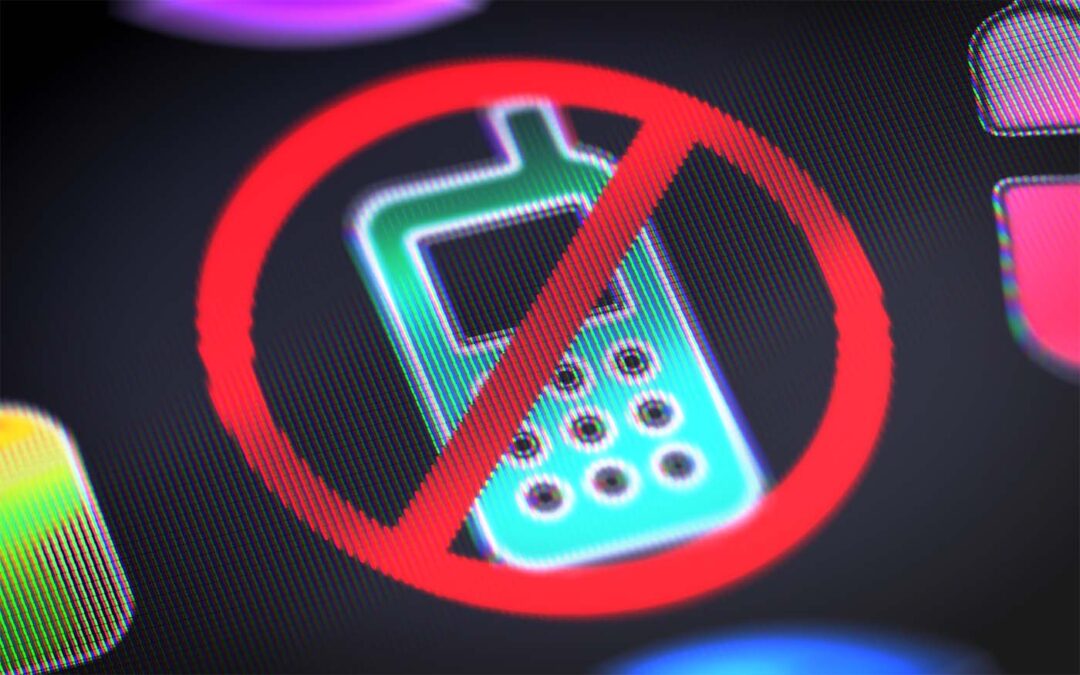Smartphones Have Proven To Be an Immense Distraction. Recent Success Stories Point to a Need for Smartphone Regulation In School
When smartphones started to be adapted en mass, a diverse variety of educators were excited about the possibilities that could come with it. People correctly assumed that the ability to put a device full of knowledge about most of human history in your pocket would transform would many fields, education included. While there were initial concerns about the distractive nature of such devices, many teachers and curriculums planned ways to incorporate phones into the classroom, believing they were now an inevitable part of a child’s education and should be used to bolster their educational experience. However, the data has shown that these initial critics have largely been correct. At least here in the United States, the rise of the mass adoption of smartphones in students’ pockets has led to declining test scores and attention spans, and a sharp rise in reported mental health issues among teenagers and young adults. While the smartphone is not necessarily the only cause of this, schools which have banned their students from having their cell phones in class have seen some positive results, and we should learn from their example.
As reported in “The Rider Online” in March of this year, studies have shown that there is a significant correlation between the amount of time students spend staring at screens, and their performance in school. The study cites the COVID-19 pandemic as a cause of multiplied screen time, but it appears that the pandemic, and the virtual schooling that came with it only accelerated trends that have been occurring for the past decade plus. The situation is getting more and more dire – as of 2021, 66% of students reported spending at least four hours a day on their phones, and said that they look at their phones an average of about five times during a teacher’s lecture. One might see this data and view it as misleading, as the worst students are typically always going to be the most distracted, regardless of what the distraction is. But it is not merely as if the poorly performing students are replacing one distraction with another. All students, generally speaking, are paying less attention, and doing worse in class. In 2022, American students showed declining proficiency in reading and math, and hit historic lows in history and civics. A shockingly low 13 % of American eighth graders scored as proficient in US history, meaning that they are able to “accurately describe the country’s major themes, events, people, and ideas.” If smartphones were supposed to make people more well-informed, they seem to be largely failing in this regard.
We should not touch on the subject of students and smartphones without mentioning the mental health crisis currently plaguing teenagers and young adults. A recent survey released by The San Francisco Chronicle suggests that a whopping 90 percent of American teenagers reported experiencing mental health issues in the past year. While we can probably chalk up some of this to a changing standard as to what constitutes a mental health issue, and a lessening of stigma around said issues, this number is still astonishingly high. One in four teens say they are experiencing suicidal thoughts, including one third of teen girls. Many researchers and bloggers have touched on this topic, and the data is pretty clear: Since smart phones became widespread for pre-teens and teenagers, their mental health has declined in striking fashion.
All of the data above is of course a generalization, and does not apply to everyone. But teachers and school districts absolutely need to take notice. We have D.A.R.E programs instructing kids as young as fifth grade about the dangers of drugs, yet we have no programs warning about smartphone addiction, or telling kids to manage their use of an addictive device that is a proven danger for their mental health. States and school boards throughout the country have recently passed far reaching policies to limit content deemed as inappropriate for children, from placing limits on the subjects that can be taught in the curriculum, to removing books deemed inappropriate in school libraries. What school board officials need to understand is that American school aged kids in 2023 are not getting their information from library books. Your student may be exposed to plenty of toxic content in school, but there’s a decent chance it’s coming not from their teachers, but from TikTok, or whatever social media network they are currently scrolling through on their phones. We should often be wary of suggesting that the personal decisions of individuals be controlled by higher authorities, but if students can be banned from bringing peanuts to school, then there is a very strong case that all smartphones should be removed from the classroom. At the very least, there should be policies in place limiting phone access in class, and a serious discussion between the teachers, students, and parents is needed to determine these. What a student does once they leave the school walls is beyond a school’s authority, but class should be a place to learn, and phones have proven to be a costly distraction. The process of learning does not happen all at once, like Googling a fact might, but requires time, collaboration, and attention committed to the task. This is how students learn to read and do math, and there is no existing digital solution that can adequately replicate this process. It is the responsibility of school districts and teachers to ensure that cellphones are not getting in the way of this.
The good news is that many school districts are paying attention to these issues, and are taking steps to ban phones from the classroom. As of the 2023-2024 school year, the state of Florida has banned cell phone use during instruction time. According to a teacher from Orange County, Florida, this ban has resulted in a “notable increase in student’s well being.” A teacher at a British Columbia secondary school which implemented similar policies stated “We are seeing improved mental health, we are seeing decreased bullying, we’re seeing more engagement in class, more social interaction. Kids are playing again instead of being on their phone and we are seeing increased academic success.” It is too soon to fully understand the effects of such bans, but school districts around the country, from the Bronx School of Letters, to Dayton, Ohio, and Saginaw, Michigan have implemented similar bans on use of cellphones. Charter schools are leading the way on this front. Enforcement may sometimes be a challenge, but that is no excuse to continue letting the problem go unchecked. A student at the Bronx Academy of Letters summed up her feelings on the cellphone ban, saying “When the school first started with the system, most people weren’t happy with it, including myself. But now looking back on it, it’s not that bad. And I just stopped caring about my phone.” These anecdotes may not represent everyone’s experience, but they should provide inspiration that many of the worrying trends we see in education can be corrected with swift action.
Written by Stephen Mayo and Douglas Goldwater.
Citations:
https://nces.ed.gov/fastfacts/display.asp?id=897
https://www.nationsreportcard.gov/reading/states/achievement/?grade=8
https://qz.com/eighth-grade-test-scores-lowest-on-record-in-us-1850400102
https://www.sfchronicle.com/health/article/teen-adult-mental-health-18273324.php
https://www.cnn.com/2020/08/14/health/young-people-suicidal-ideation-wellness/index.html
https://edsource.org/updates/how-a-cell-phone-ban-in-florida-is-affecting-students#











